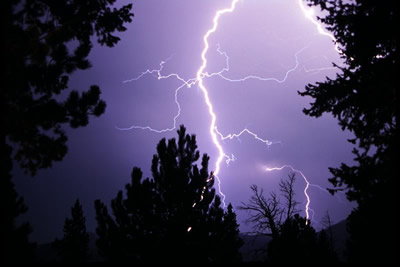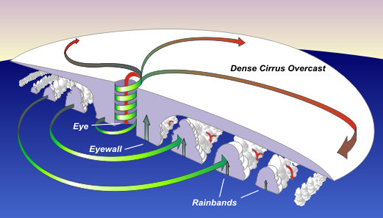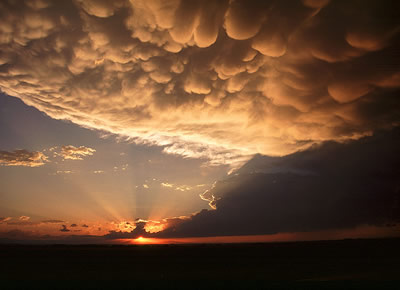This is a photograph of a cumulonimbus cloud. Notice how the top of the cloud is shaped like an anvil.
Click on image for full size
Courtesy of UCAR Digital Image Library
Cumulonimbus
Cumulonimbus clouds belong to the Clouds with Vertical Growth group. They are
also known as thunderstorm clouds. A
cumulonimbus cloud can grow up to 10km high.
At this height, high winds make the top of the cloud flat. Cumulonimbus clouds can produce heavy rain, snow, hail, lightning, and tornadoes.
You might also be interested in:

Clouds with vertical growth include cumulus and cumulonimbus clouds. These clouds develop by warm air rising from the surface. They grow high up into the atmosphere rather than spreading out. Cumulus and
...more
Thunderstorms are one of the most exciting and dangerous types of weather. Over 40,000 thunderstorms happen around the world each day. Thunderstorms form when very warm, moist air rises into cold air.
...more
Raindrops form when tiny water droplets collide together in clouds to form bigger ones. When they get too heavy, rain falls out of the clouds. Rain is more than 5mm in diameter. The types of clouds that
...more
Lightning is the coolest thing about a thunderstorm. In fact, it is how thunderstorms got their name. Wait a minute, what does thunder have to do with lightning? Well, lightning causes thunder. Lightning
...more
Cumulus clouds belong to the Clouds with Vertical Growth group. They are puffy white or light gray clouds that look like floating cotton balls. Cumulus clouds have sharp outlines and a flat base. Seeing
...more
At the center of a fierce tropical storm, there is a small area where the weather is calm, the sky is clear, and the winds are just light breezes. This area is called the eye of the storm. The eye looks
...more
Mammatus clouds are pouches of clouds that hang underneath the base of a cloud. Usually mammatus clouds form with cumulonimbus clouds. Mammatus clouds can look like a field of tennis balls or melons.
...more













